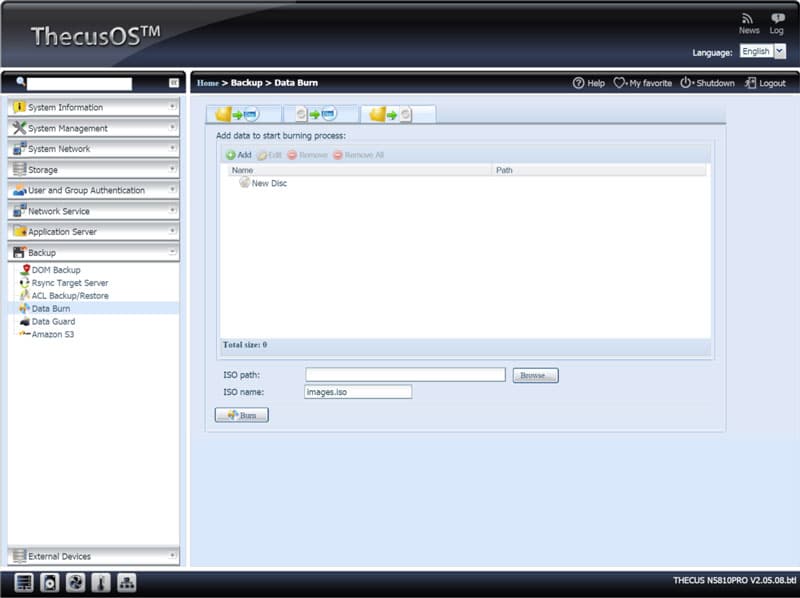Thecus N5810 Pro Zero-Crash 5-Bay High-Performance NAS Review
Bohs Hansen / 10 years ago
Setup – Users, Services & Backup
Users and Groups
The Initialization Setup Wizard created one user for us, but unless you’re the only one that has to access the device, you’ll need to create some more.
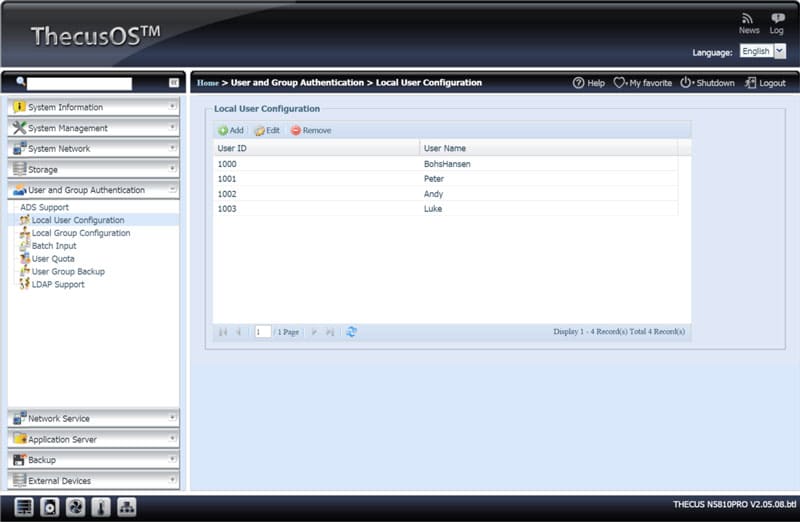
Creating new users is a breeze with Thecus OS, just enter a name, change the user ID if it doesn’t fit your preferences and add a password. Optionally you can assign it to existing groups.
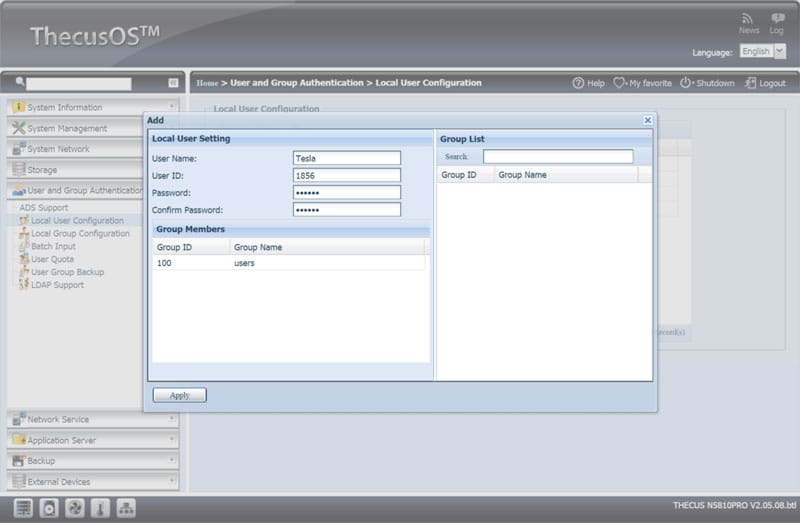
Speaking of user groups, these are just as easy to create and setup as the users were. The benefit of having usergroups is that you can set and change rights for a whole list of users much faster and easier.
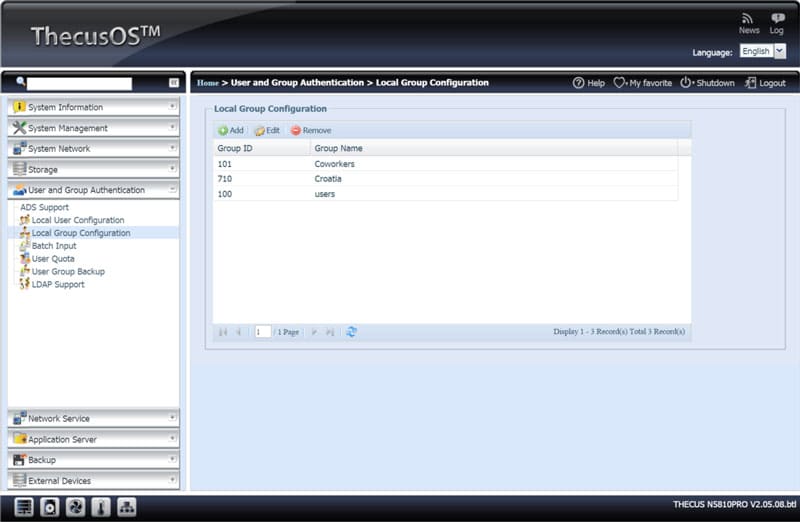
Just hit the Add button and create all the groups you’d like. You can drag already created users directly into the list to make them a part of the new group right away.
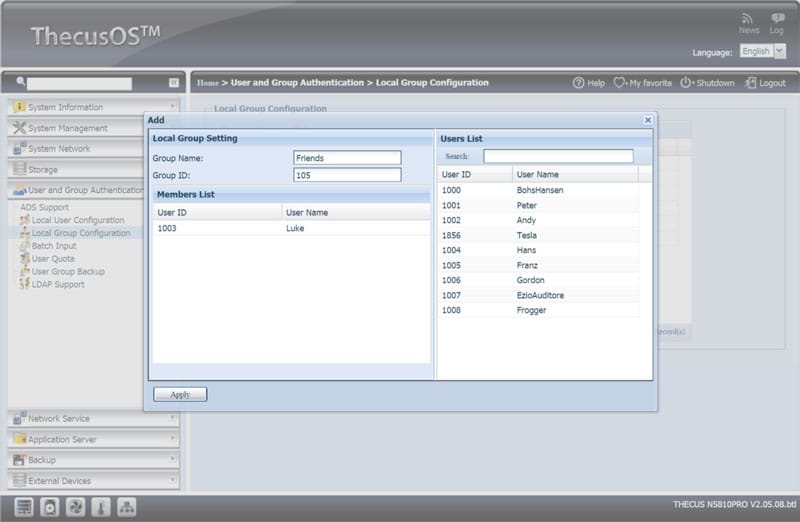
But creating a lot of users this manual way can be a hassle, especially if you got more than a few to do. Thecus added the Batch User and Group creating for just this and it’s as easy as typing.
The description at the bottom will tell you the format and then you can either create a text file with it or enter it directly in the edit field. The only downside is that you can’t define user and group IDs, but it makes creating or recreating a lot of users as easy as it’s possible. A lovely feature.
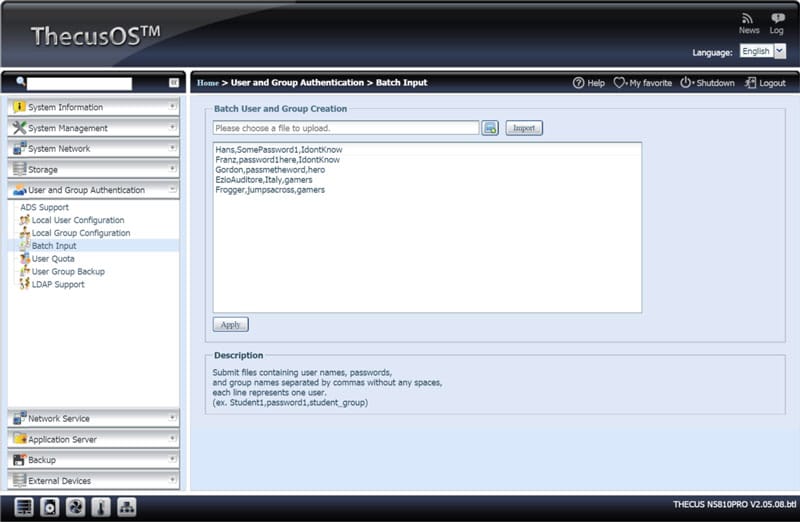
The Thecus N5810 Pro also supports LDAP and ADS users and if you’re a user of these services, then the two images below will look just as easy as everything else.
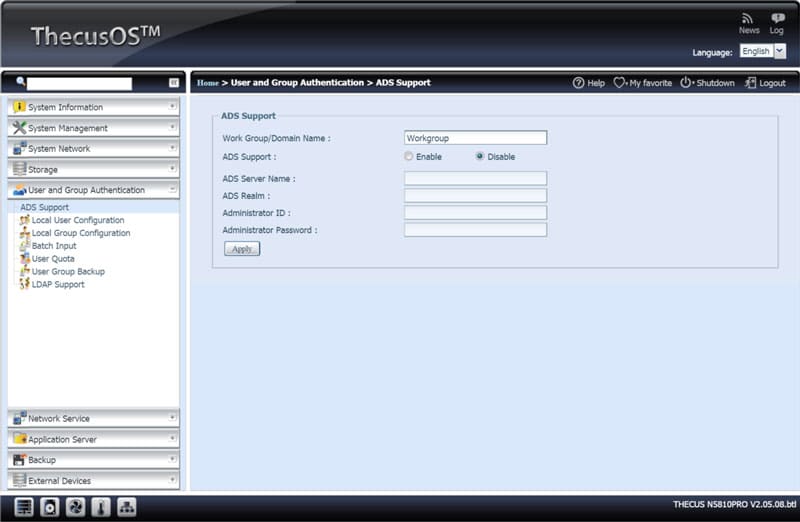
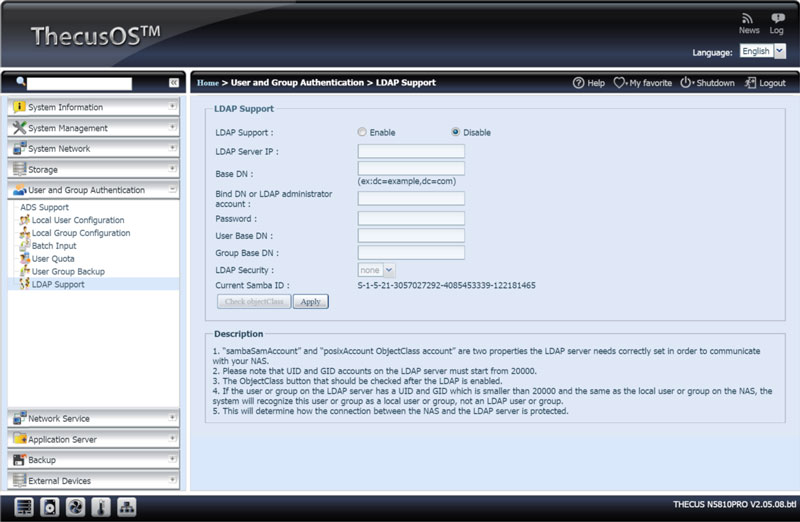
Network services
Thecus supports pretty much any network service you can imagine. I know there are quite a few Apply users among our readers and they are covered with both the Bonjour and AFP with TimeMachine support.
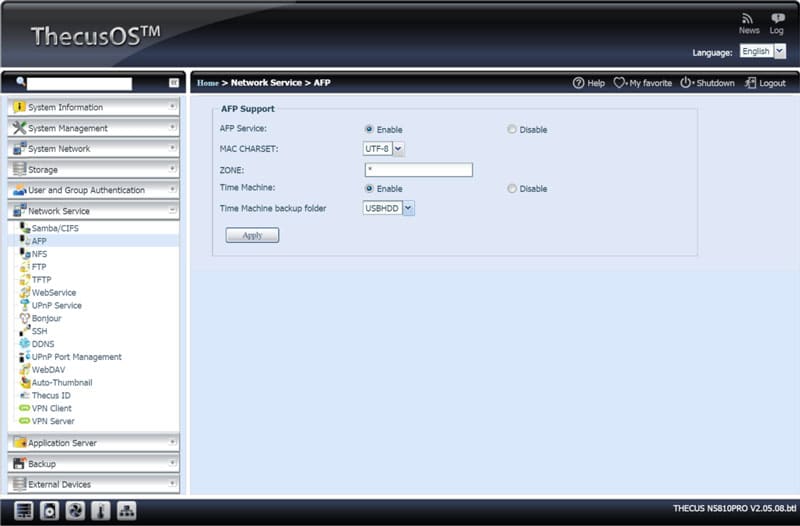
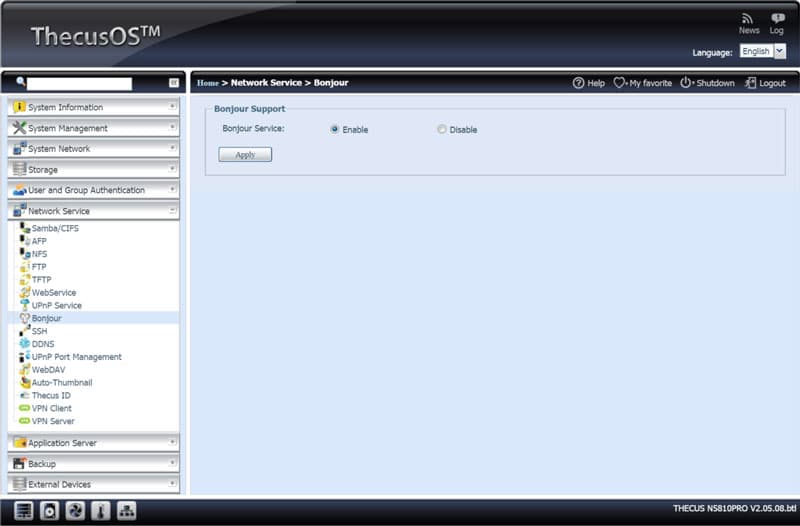
Windows users might want to take a look at the Samba/CIFS settings, although there is a very good chance that everything is set as it should be for your needs.
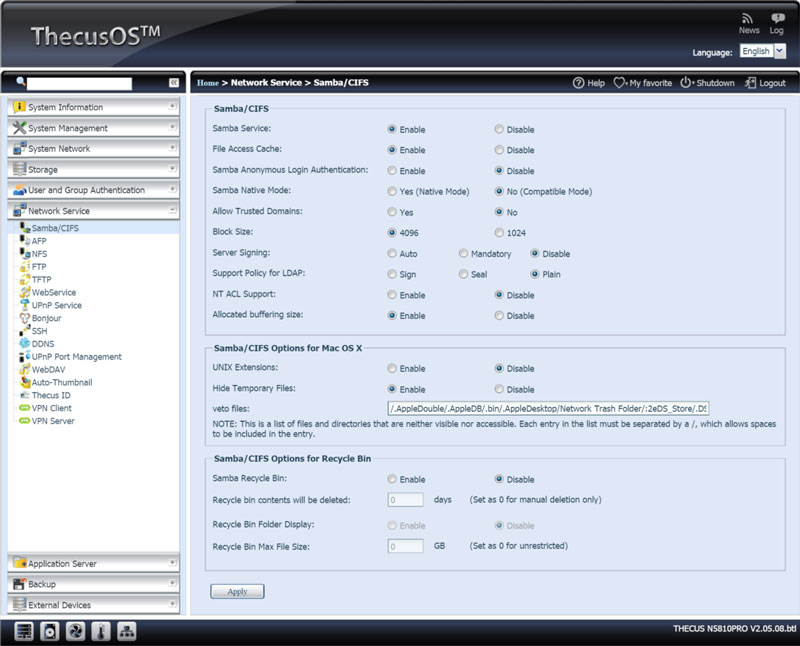
Both FTP and TFTP file transfer protocols are supported. While TFTP is more of a legacy thing, it’s still nice to have around and the FTP server allows for easy configuration of passive ports, character set and bandwidth control.
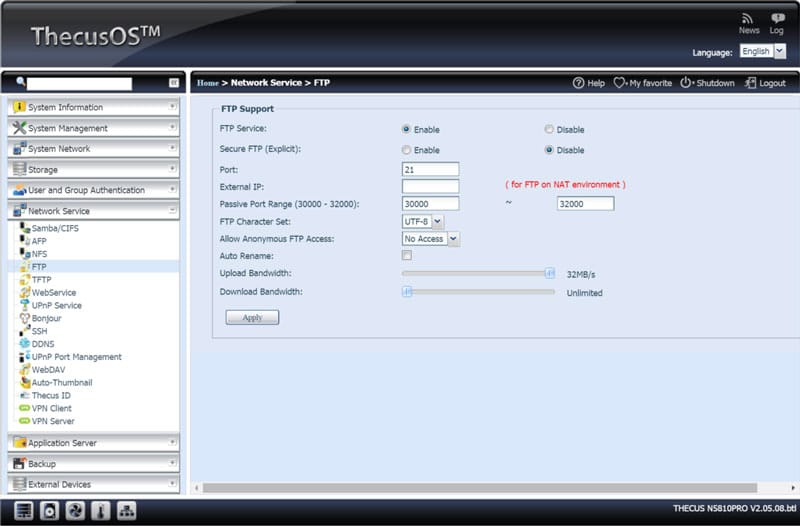
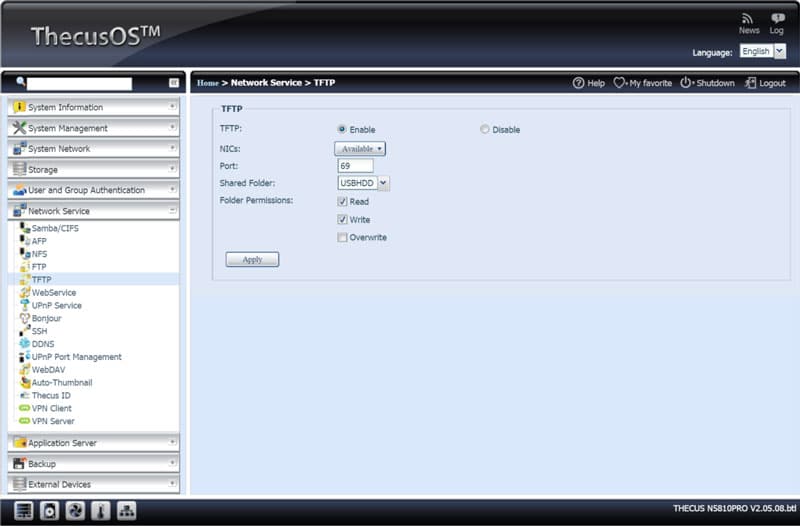
SSH is also supported as it should be, and that includes SFTP; one of my favorite features and one I use a lot in my normal everyday life at home.
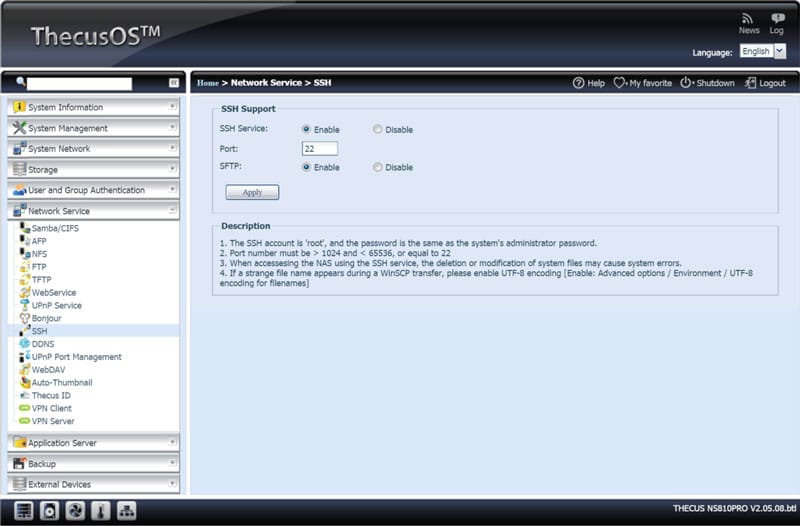
VPN Server and Client are both present in ThecusOS on this N5810 Pro 5-bay NAS unit, ready to protect you as you “tunnel” through the internet.
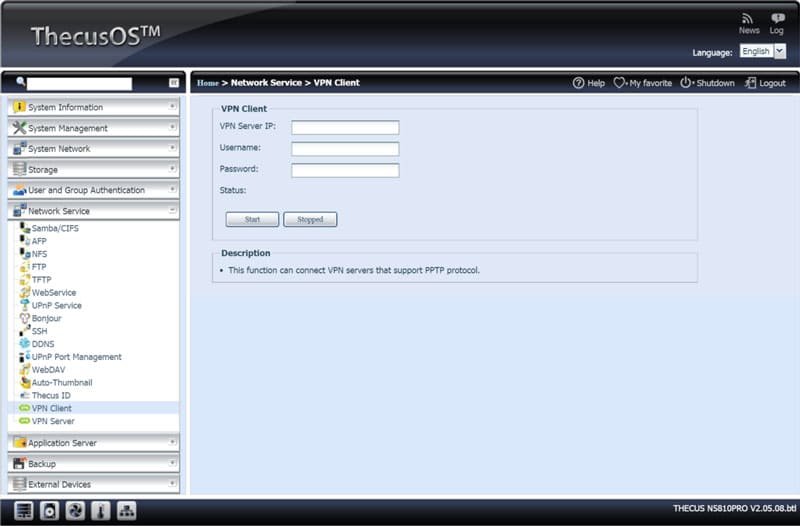
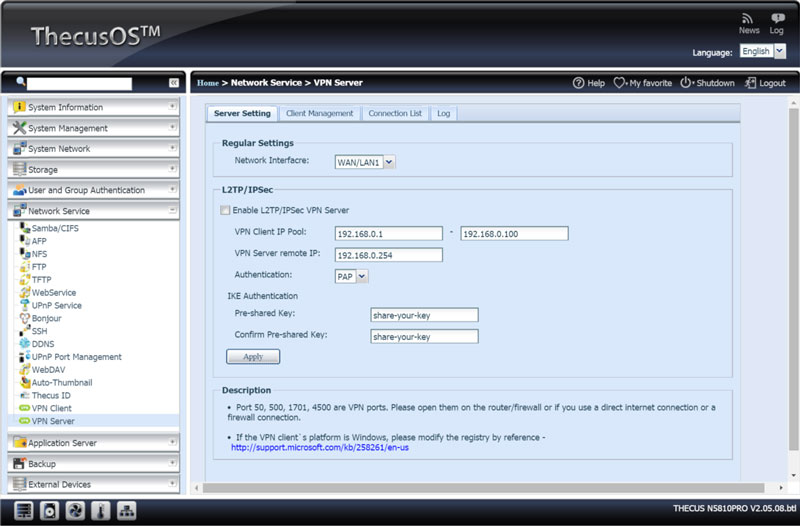
Backup
There are many sides on the issue of backups and it looks like Thecus has this covered from all sides as well. That’s no surprise as we’ve seen a full feature set so far. The ability to backup the internal DOM on a regular basis is another great and mostly overlooked feature.
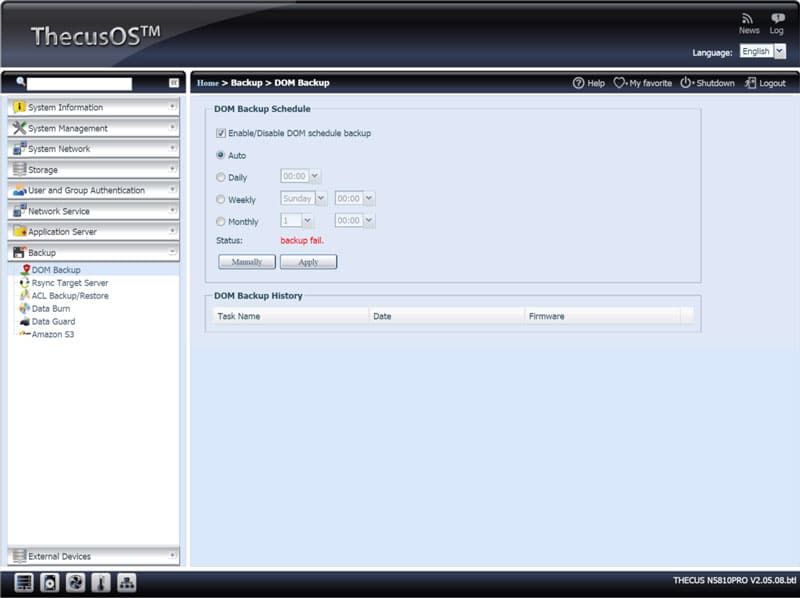
Rsync is probably one of the most used backup solutions as you can get it to work on almost any platform. It’s simple, easy to use and your new N5810 Pro can also work as target server for your Rsync jobs.
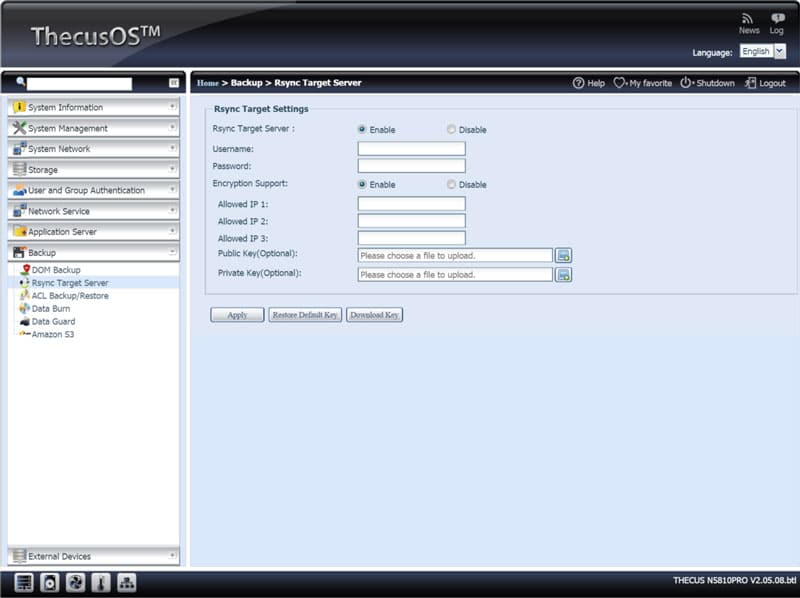
One thing is local backups and that’s a great thing. But offsite backups add another layer of security for your data. We see support for it all here with local backup to folders or devices as well as iSCSI targets, but also remote backup to other NAS devices or Cloud backup to Amazon’s S3 service.
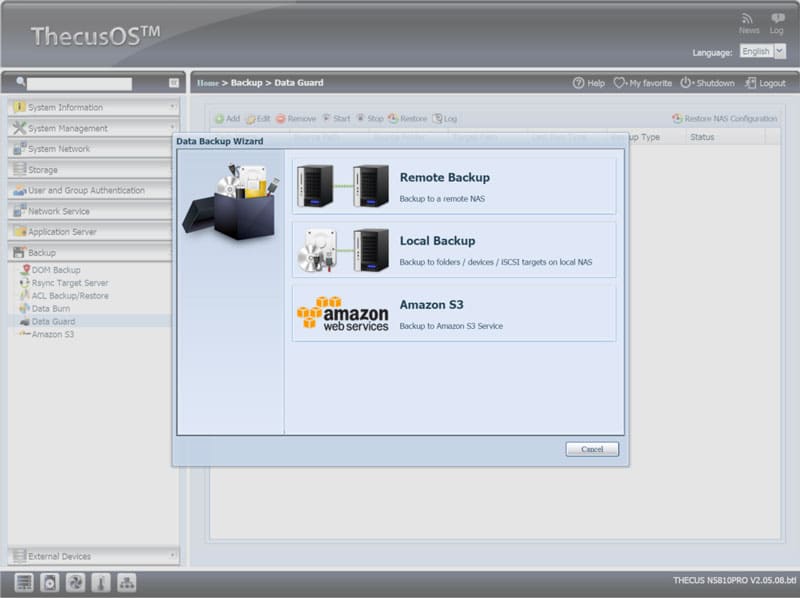
For those extra hard copies, Thecus added the ability to burn CDs, DVDs, or Blu-Rays directly from your NAS, assuming you have connected a burner that can handle the formats to the USB ports. It can also just create ISO files of your data if you do not wish to burn directly or if you wish to burn them at a later time.
